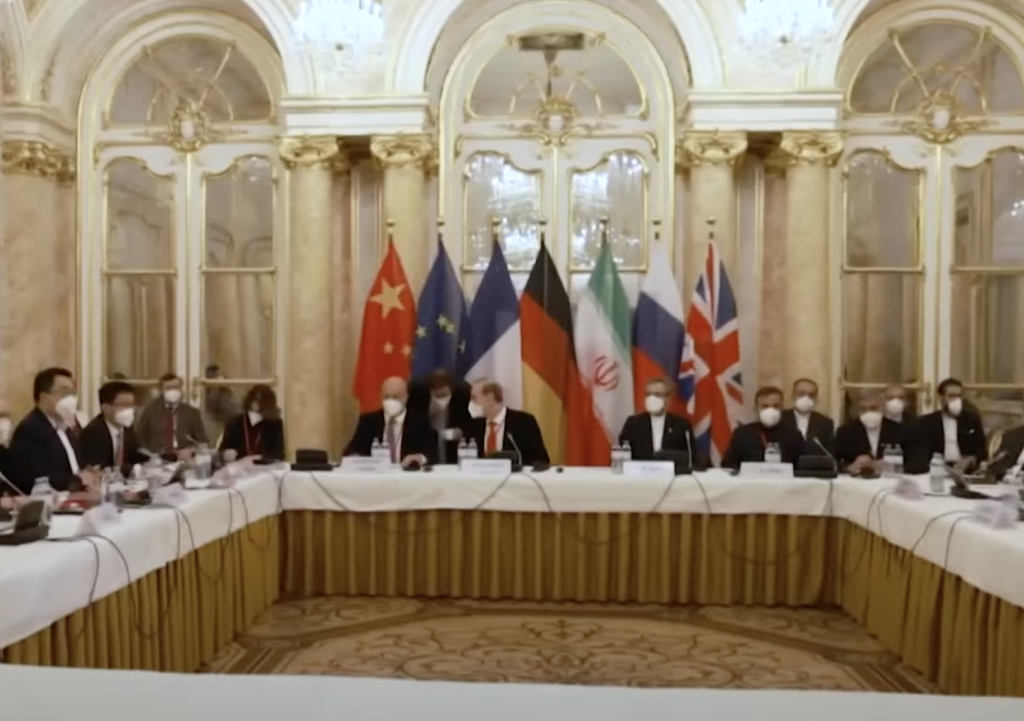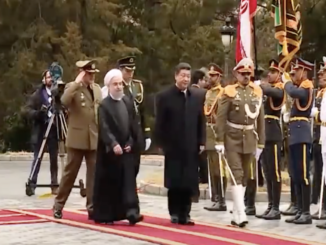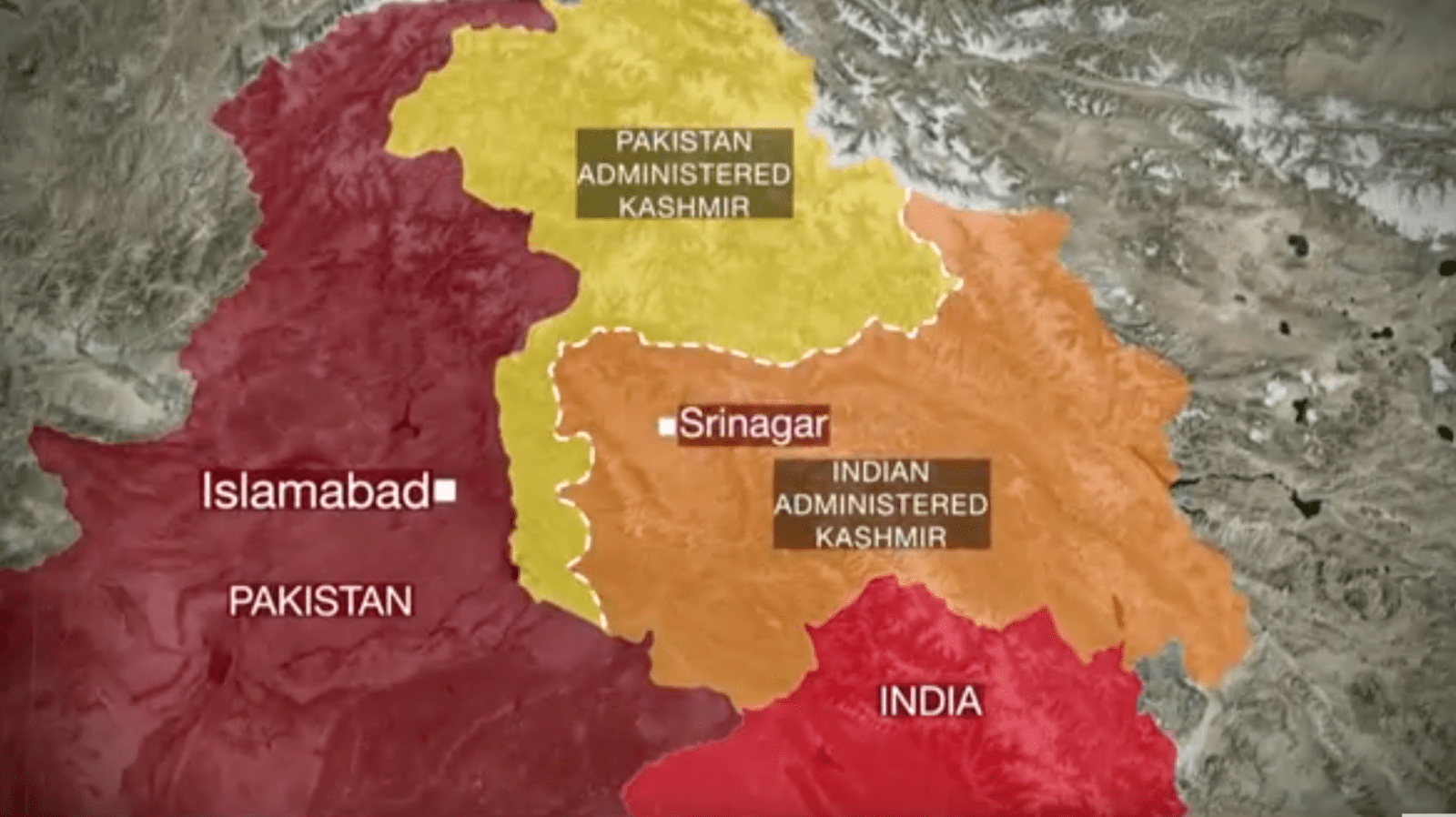
In a news cycle of world affairs filled with numerous crises and matters, the current Ukraine-Russia conflict has taken center stage and rightly so. It is a cause for international concern and a call for analysis, but should not be so at the cost of other important developments. The recent JCPOA negotiations and its prospective restoration faces one obstacle after another. A landmark achievement for the arms control and the non-proliferation regime which took shape in in 2015, the core essence of the Joint Comprehensive Plan of Action was to halt Iran’s nuclear program as it had become gravely concerning for the international community, primarily the P5+1. The entire agreement was jeopardized when the USA unilaterally pulled out in 2018 under President Trump, making it toothless as it removed compliance incentives for Iran.
Recently, there have been renewed efforts for restoring the agreement and a series of negotiations have taken place with a fair amount of progress. Iran’s foundational nuclear motivations are important for understanding why it has come back to the table, despite a more conservative leadership at its center, and why it agreed to the JCPOA in the first place. Whether or not the JCPOA is restored to a 2022 edition also depends on the motivations of all parties involved, including Iran, and the benefits they receive from an Iranian nuclear program that is kept in check.
Iran’s Underlying Nuclear Motivations
What makes a state go nuclear? A short question with a complex answer. As far as the peaceful part of a nuclear program goes, there are numerous benefits of nuclear technology that a state would benefit from. It provides diversification of energy production programs, aids the agriculture sector through high yield and resilient crops, and offers cancer related medical treatment.
Pursuing a nuclear weapons program, however, may not have impetus as simple as that. There are many models that explain underlying motivations. The proliferation puzzle model suggests that presence of a major military threat, that cannot be countered conventionally, leads to the pursuit of nuclear weapons. For Iran, even though it does face substantial military threats, this may not be the right explanation.
Iran is the descendant of the great Persian Empire. It is not just a nation state but a civilizational state. This leads to the prestige factor; in an environment filled with competitors posing security threats (Israel and Saudi Arabia), this gives cause for initiating a nuclear weapons program as explained by Scot Sagan’s security model. However, the political and influence factors associated with nuclear weapons may provide the primary reason for Iranian motivations.
Struck with sanctions soon after the Iranian revolution and facing isolation, a nuclear weapons program was Iran’s ticket to the world table; it was a means to an end rather than the end itself, the end being economic prosperity and political influence, both of which are interlinked. This explains why Iran decided to agree to the JCPOA in the first place, to achieve a path to economic prosperity through easing of sanctions. Pursuing nuclear weapons as a path to achieving economic prosperity and political influence is also corroborated by Supreme Leader Ayatollah Khamenei’s fatwa against nuclear weapons. Put together, these reasons suggest that Iran went forward with its program not to actually acquire nuclear weapons but to use that pursuit for political leverage leading to economic leverage and prosperity.
Recurring Objections to the Nuclear Program
For a long time, Iran has justified its nuclear program by giving reasons of peaceful application, civilian use and industrial benefits, among other things, for its pursuit. In 2003, it issued the Tehran declaration where it agreed to voluntarily implement an Additional Protocol with the International Atomic Energy Agency (IAEA). This meant added inspections and safety compliance. Its aim was to acquire modern technology as a result. However, such agreements and deals eventually faltered as the West began raising objections in relation to the Non-Proliferation Treaty which includes Iran as a Non-Nuclear Weapon State (NNWS) member. Iran’s reasoning was that the other side of the table would not live up to their bargain, leaving it no option but to continue with the objectionable aspects of its program.
All objections to Iran violating the NPT are arguably hypothetical since there is no mechanism to verify any violations and even the UN Security Council has not categorically declared Iran to be in violation of the treaty. However, objections exist based on claims that Iran violated its safeguards agreement with the IAEA. This creates the argument that it violated Article III of the NPT, which asks its NNWSs to accept and follow those safeguards. Other objections have been raised about Iran supposedly violating Article II of the treaty that deals with the manufacturing or acquisition of nuclear weapons, and any help given or received related to that effect. This objection and claim is also made without substantive evidence; it was stated that there were “possible military dimensions to Iran’s nuclear programme,” which could mean the violation of Article II. Without conclusive proof, actions against Iran for its nuclear program indicate that the objections leveled against it are political and not based on concern for the non-proliferation regime which is used as the reason by its flag bearers.
Whether or not the JCPOA will be restored in a 2022 edition is yet to be seen. Before negotiations had started, Iran had begun to exceed the limits it had agreed to, after the initial fallout, and started Uranium enrichment to higher concentrations. This was in response to the other parties not holding up their side of the bargain. Regardless of its reasons and justifications, it was still enriching more than what is deemed as suitable for civilian use. This does not match with the expectations of a NNWS part of the NPT. After the death/targeted killing of its top general by the USA and then its top nuclear scientist by Israel, it removed limits on its nuclear enrichment and ended its agreement with the IAEA for monitoring. However, for a year after the USA had pulled out of the agreement, Iran was verifiably in compliance till 2019. This again backs up its primary reason for the nuclear program, pursuing political and economic benefits. Until major sanctions were invoked, it stayed in compliance and when leverage was required then it went on to strengthen the nuclear program.
JCPOA 2022 and Implications from the Murphy’s Law Effect
Negotiations had been going smoothly and the chances of the JCPOA’s restoration were extremely high. Then came the Russia factor. Western sanctions had piled up immensely and comprehensively after Russia’s attack on Ukraine and Russia demanded in the negotiations that its military and trade cooperation with Iran be removed from those sanctions as part of the JCPOA 2022. This had halted the negotiations, but the release of British-Iranians that had been detained in Iran points to a thaw and better chances of restoration. However, what if Murphy’s Law gets applied, and everything that can go wrong does go wrong?
If the JCPOA does not get restored, for one reason or another, Iran might go on the same course it did last time. If the road to political influence and economic prosperity through mainstream channels and peaceful nuclear technology is blocked then the detour through a nuclear weapons program becomes the next best option. This would add to the existing critique of the NPT that it not only lacks teeth but also dentures for a substitute. Its credibility as a pillar of the non-proliferation regime would further crumble, more so if Iran decides to follow North Korea’s route and decides to leave NPT altogether. On the other hand, if it stays and continues on its trajectory in the event the JCPOA is not restored, then it will add to the conception of the non-proliferation regime being a hollow facade.
In either case, the regime would be further weakened if, seeing Iran’s actions, other regional powers such as Saudi Arabia try to follow suit and proliferate, to some added degree, citing security threats from Iran as part of Scot Sagan’s security model of proliferation. Most recently, the regime was also arguably weakened due to the possibility of the AUKUS deal violating Article III of the NPT. While much about the specifics of nuclear-powered submarines remains in the dark, the sheer notion that the idea of their transfer to a NNWS of the NPT can be floated suggests a weakening of the regime by the parties that essentially crafted it. If the JCPOA negotiations fail, it could be seen as the first domino falling for the NPT based non-proliferation regime.
![]()




Faraz I am much delighted after reading your article. Keep it up.